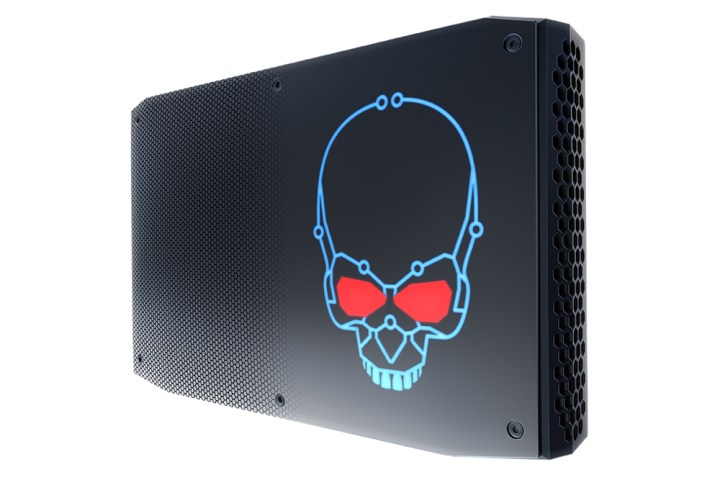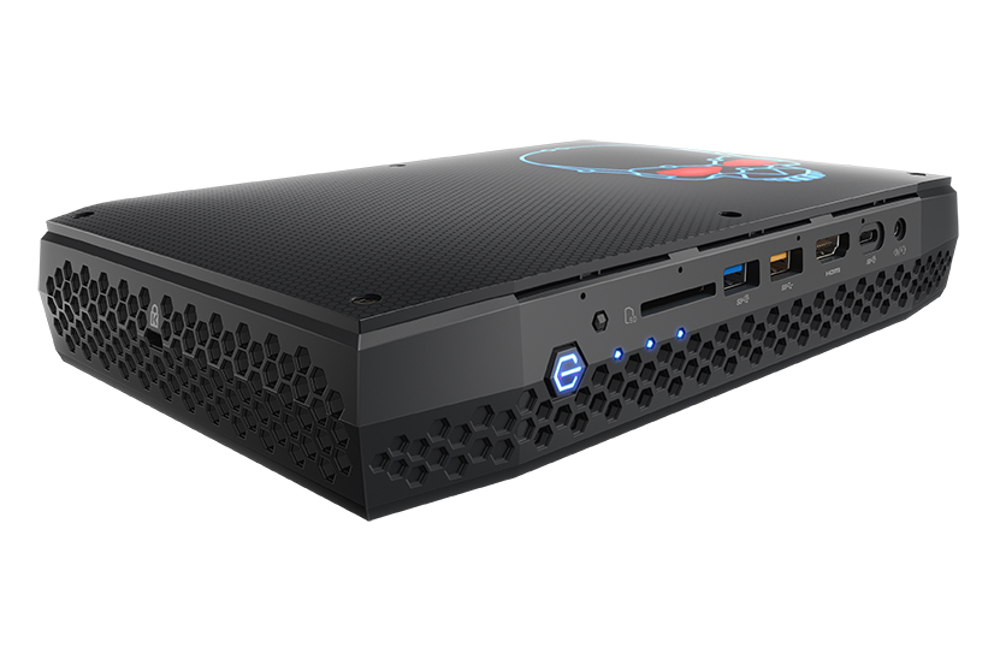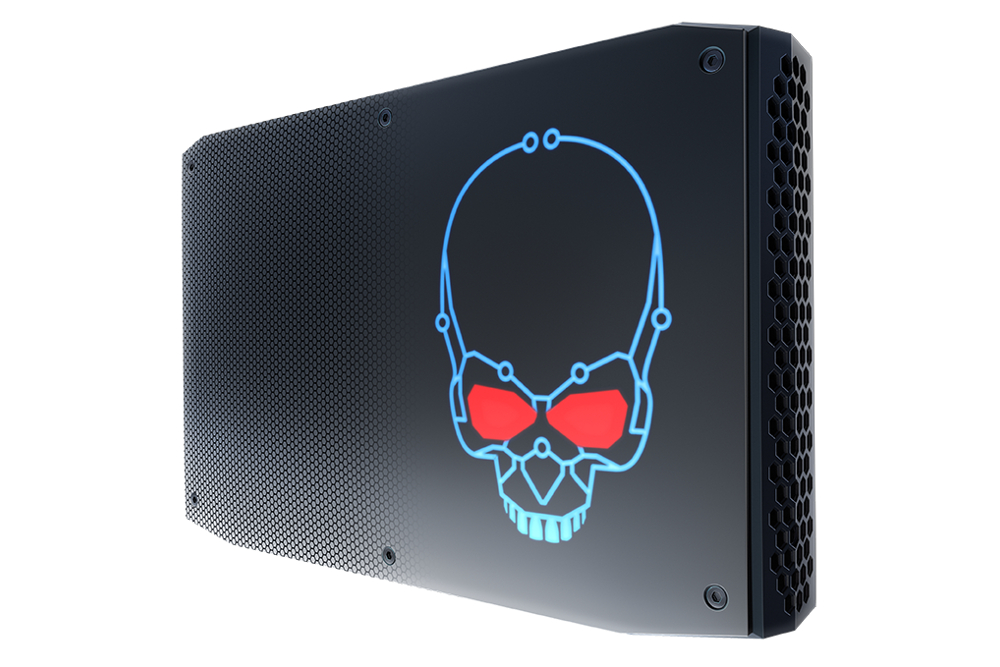
Although Intel didn’t provide any detailed hardware specifications prior to Sunday’s reveal, what we do know is that it’s based on the Core i7-8809G. We saw this module briefly listed on Intel’s website in India earlier this week, but now we have confirmed hardware details to give us an idea of what this NUC for “enthusiasts” is all about. Here’s are the specifics:
| Model: | Core i7-8809G |
| Intel cores: | 4 |
| Intel threads: | 8 |
| Base speed: | 3.1GHz |
| Maximum speed: | 4.2GHz |
| Shared Cache: | 8MB |
| Supported memory type: | DDR4 @ 2,400MHz |
| Supported memory channels: | 2 |
| Integrated graphics: | HD Graphics 630 |
| Base speed: | 350MHz |
| Maximum speed: | 1,100MHz |
| Discrete graphics: | Radeon RX Vega M GH |
| Discrete graphics architecture: | Vega M |
| Compute units: | 24 |
| Stream processors: | 1,536 |
| Base speed: | 1,063MHz |
| Maximum speed: | 1,190MHz |
| Memory bandwidth: | 204.8GB/s |
| Memory amount: | 4GB HBM2 |
| Render output units: | 64 pixels per clock |
If you haven’t kept up with recent Intel-based news, your eyes aren’t playing tricks. The Core i7-8809G is a rectangular device sporting three chips on a small, enclosed circuit board: One packing Intel’s CPU and integrated GPU cores, one playing host to AMD’s Vega M cores, and one housing dedicated HBM2 memory. The Intel and AMD chips are connected by eight PCI Express lanes while AMD’s chip connects to the HBM2 memory package using Intel’s Embedded Multi-Die Interconnect Bridge technology.
Due to the module’s shape, you can’t just cram the chip into any motherboard supporting eighth-generation processors. The design saves space compared to the typical CPU/GPU/GDDR layout in notebooks and AIO PCs. The modules are also unlocked on all three levels. You can read more about Intel’s new 8th-Gen Intel Core with Radeon RX Vega M graphics in our round-up.

Between Intel’s Kaby Lake cores and AMD’s Vega M cores, the new NUC should be able to handle PC-based VR experiences, and high-resolution gaming. AMD’s Vega M is the company’s latest GPU design that made its debut in the Radeon RX Vega 64 and Vega 56 add-in cards. AMD then brought its Vega graphics cores to its new Ryzen-branded all-in-one chips (APU) packing up to a mere 640 stream processors (10 CUs). But combined with Intel’s integrated graphics, the company’s tiny new NUC 8 can handle six displays lighting up your face at one time.
How small is the NUC 8? Intel says it takes up around 1.2 liters of space despite all the horses running inside. But keep in mind that despite its size, the NUC 8 may not sport a small price tag. Intel’s NUC 7 for enthusiasts has a starting price of $899 packing 16GB of memory, a Core i7-7667U processor, 512GB of storage, and more.






